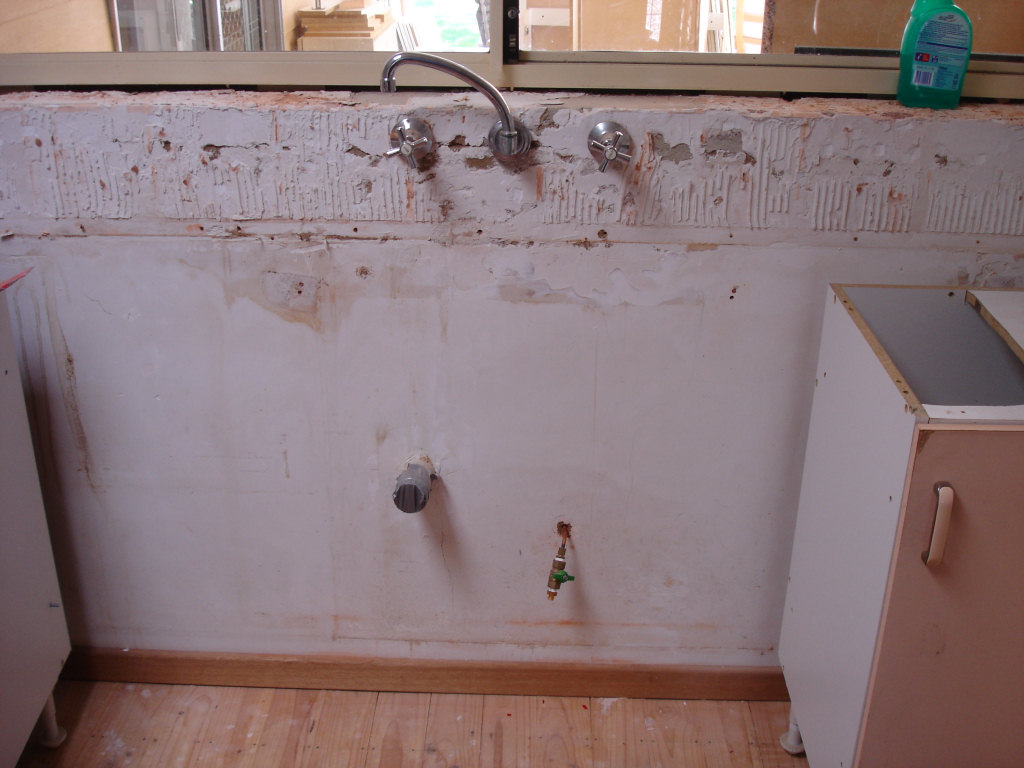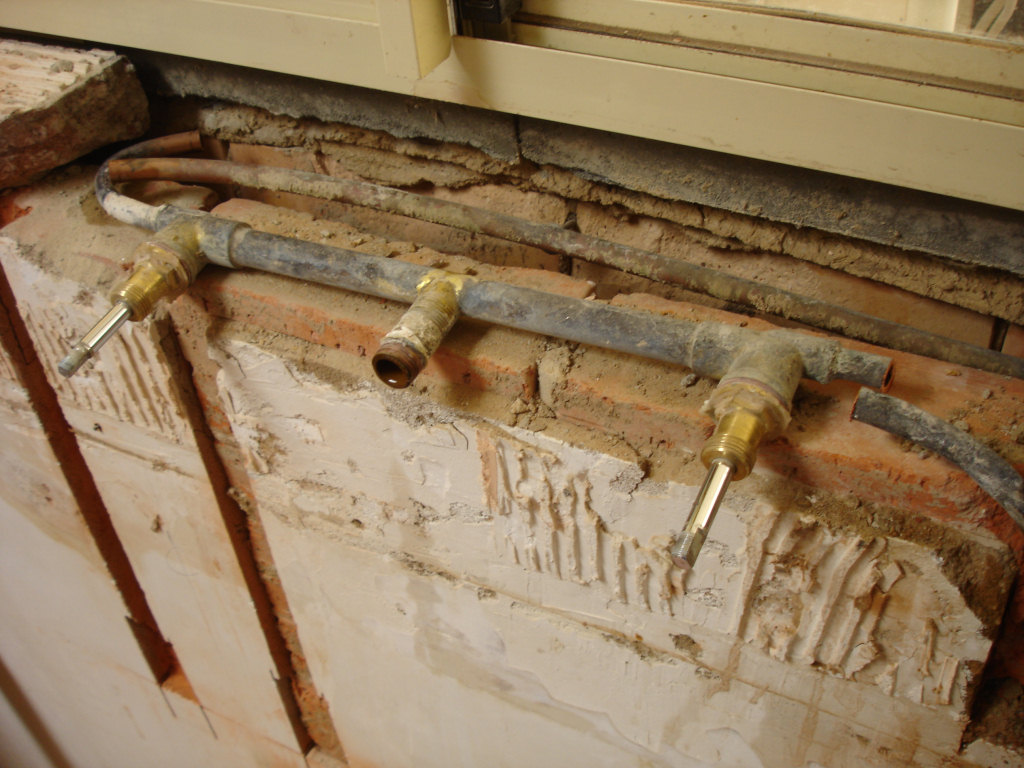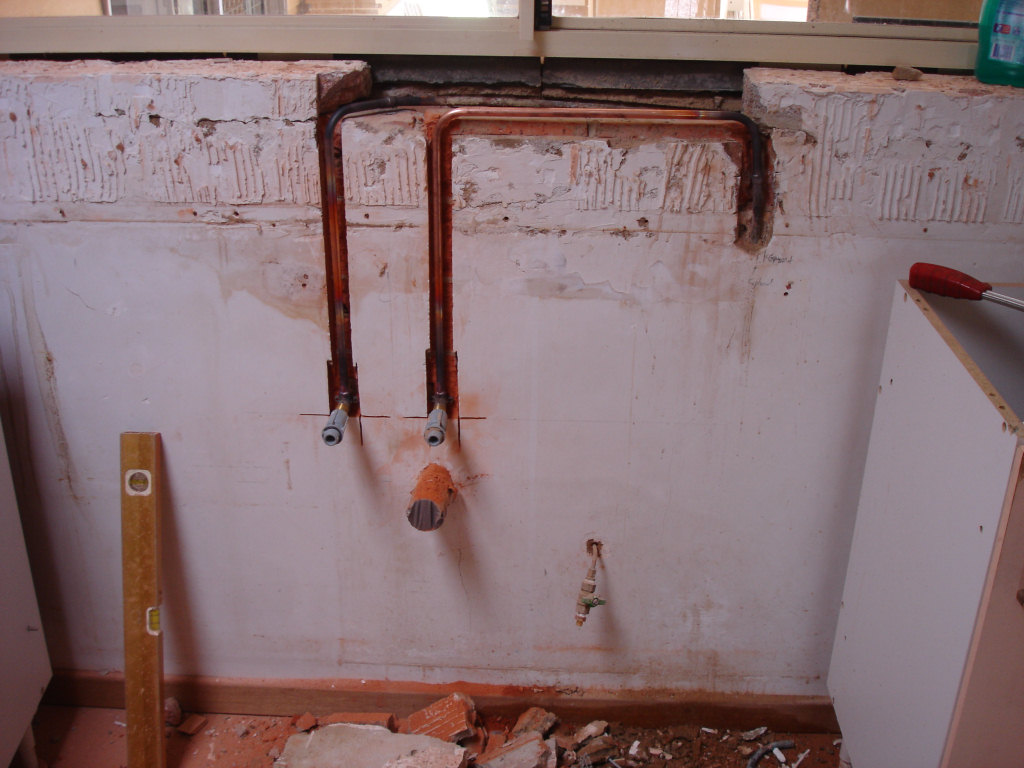I’m often asked about moving the taps from above a kitchen sink during kitchen renovations. Customers are a little unsure about what’s behind those lovely splashback tiles and that faithful old kitchen cupboard that’s been holding the bench up off the floor for all these years.
The classic wall taps and wall spout above kitchen sinks are slowly disappearing as people update their kitchens and install mixer taps. Installing a mixer tap where there’s currently wall taps is only possible by removing the kitchen bench and cupboard and opening the wall so this is a job reserved for that rare occasion when the kitchen is renovated.
These pics are from a job in Hope Valley where the home owner is a cabinet maker. The old kitchen was already removed along with the wall tiles before I got there. The small valve right of the kitchen waste you can see there is for a Puratap. The customer wanted to leave that where it is but a nice option is to install a second cold water point just for the filter tap.

Behind the kitchen cupboards and tiles before plumbing begins.
One thing this renovation didn’t need that kitchen renovations often require, is moving the waste pipe lower. We spent a little time checking where the sink and mixer tap would line up when the new kitchen is installed. It ended up being a little left of the centre of the window so the wall was marked and cut for pipework accordingly.

This is what hides behind kitchen wall tiles. A sink breech is entirely different to what is needed for a sink mixer so out it comes!
Not only is the sink breech completely useless when it comes to connecting a sink mixer, it’s also in the wrong place. There’s no choice but to open the wall and modify the pipework. This job is typically easier where the house is constructed using frame walls instead of brick.
In the bottom left corner of the picture above, you can see the wall chases have been cut for new pipework. The sink breech has been fully exposed and cut free. Note that the brickwork where the breech was hosting the hot and cold taps has been fully removed from the wall. This is not entirely necessary for the plumbing to proceed, it’s just what ends up happening when the plumber tries to expose the pipework in this situation where the breech is close to the edge of the bricks.
In the picture below, the new pipework is connected to existing pipework with silver brazed joints and the brass lugged elbows are fastened to the brickwork with a plug and screw before chases are mortar filled. The lugged elbows are capped and ready for water to be turned back on so the customer can use the plumbing in the rest of the house while the renovation is underway.

New pipework is installed and capped. Brickwork needs to be reinstated and the renovation can continue.
